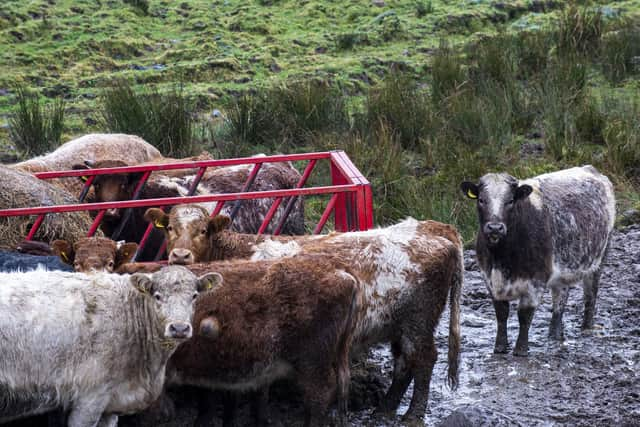Farming: COP26 targets for cutting methane can be met, report says
That was the claim made yesterday as a new report was published by the Ruminant Health and Welfare Group which pointed out that such a reduction could be made by countering the effects of poor health, ill thrift and lowered fertility.
“All the major reports have recommended that livestock health status acts as a key constraint on efficient livestock production,” said the report’s author, Dr Philip Skuce of Edinburgh’s Mordeun research centre.
Advertisement
Hide AdAdvertisement
Hide AdPutting production losses due to morbidity and mortality at close to 20 per cent, he said that these accrued not only from large-scale outbreaks of exotic diseases but also from underlying endemic diseases, including worm infestations which could lead to death, poor daily liveweight gain, low food conversion efficiency, abortion and reduced milk yields.


And Skuce said that the report detailed available interventions for priority health and welfare conditions to provide a starting point for discussions between farmers and vets about identifying disease goals with methane reductions in mind.
However chair of the Ruminant Health and Welfare Group, Borders farmer, Nigel Miller, said that while the science had moved on by leaps and bounds in recent times, politicians and policy development had been slow or static – and warned that urgent action was required if “blunt solutions” were to be avoided.
Speaking after reports had surfaced indicating that Northern Ireland faced cutting the national cattle herd by 500,000 and the national sheep flock by 700,000 to meet methane reduction commitments, Miller said that making use of science was a far smarter way to address the issue. “It looks like the industry needs to take ownership of the exciting developments which there have been in this field and move things forward before it is too late.”
But Miller also said that government had to work with the industry and to identify a single carbon auditing tool for the sector to assess the impact of mitigation actions at both individual farm and national levels.
“Monitoring tools and calculators have not been validated or standardised and are often challenging to undertake. With literally dozens of carbon calculator tools available it is easy to pick one which is completely meaningless.”
This, he claimed meant that while farmers were highly aware of climate change, its impact and the challenge of moving to net zero, they were extremely disadvantaged by the lack of reliable, consistent tools.
And he added that carbon calculators should not only deliver a robust baseline but should also act as a monitoring tool and, with a more user friendly interface, act as a planning tool to test potential management scenarios before implementation.
Advertisement
Hide AdAdvertisement
Hide AdOn practical measures for farmers, Miller said in his personal opinion, a qualifying factor for policy should be a farm strategy for the purchase, screening and vaccination of stock – with diseases such as Johnes, sheep scab and IBR joining BVD as national priorities.
Comments
Want to join the conversation? Please or to comment on this article.